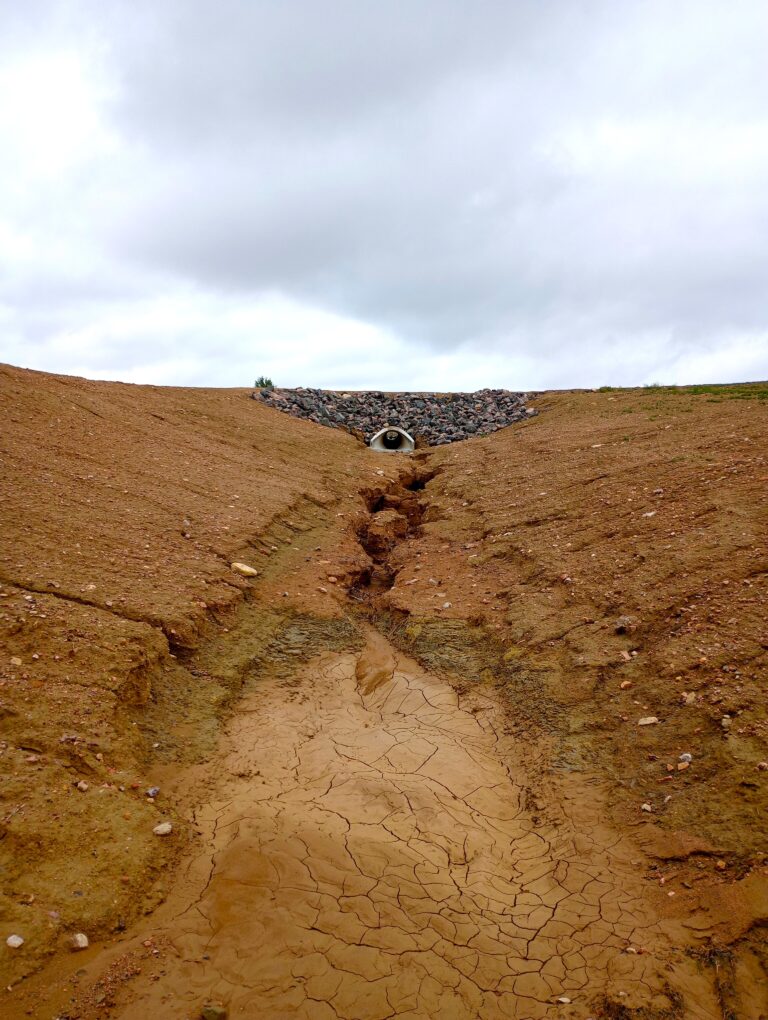As discussed in previous blogs, stormwater compliance involves many moving parts, and
violations can happen—sometimes unintentionally. In this blog, we highlight the top five
stormwater compliance issues we most frequently encounter on projects across Colorado.
1. Lack of a SWMP and/or its implementation
A Stormwater Management Plan (SWMP) is a required component of the
Colorado Department of Public Health and Environment (CDPHE) stormwater
permit. The SWMP identifies the best management practices (BMPs) necessary
for a project and specifies where they should be installed. However, the SWMP is
not simply a document to keep on file—it must be actively implemented on the
project. Failing to have a SWMP in place is a compliance violation, and so is
having a plan that does not match actual site conditions. For example, if BMPs
are described in the SWMP but not installed (or vice versa), the site is out of
compliance. To remain compliant, projects must maintain a complete, detailed,
and routinely updated SWMP that accurately reflects ongoing site activities.
2. Failure to install/maintain BMPs
The BMPs that are discussed in the SWMP must be properly installed and
routinely maintained to remain effective. Correct installation from the start of the
project will reduce future maintenance needs. Since construction sites are
dynamic and conditions can change daily, it is equally as important to keep up on
BMP maintenance. BMPs that are compliant one day can be compromised the
next. For example, a silt fence may be damaged by equipment, or rock socks
protecting an inlet may become ineffective if driven over. Because BMPs are
susceptible to damage during everyday site activities, it is crucial to regularly
inspect them, repair issues promptly, and ensure they continue to function as
intended to avoid compliance violations.
3. Improper site stabilization
Site stabilization is a critical requirement of stormwater compliance and falls into
two categories: temporary and permanent. Temporary stabilization methods,
such as erosion control blankets, temporary seeding, or covering stockpiles, are
used to protect disturbed soils until permanent measures can be established.
Permanent stabilization is required once construction or earthwork is complete
and typically involves practices like sodding, landscaping, permanent seeding, or
paving. Leaving soils exposed after project completion, or failing to stabilize
areas within the timeframes required by regulation, constitutes a violation and
increases the risk of erosion and sediment discharge.

Lack of stabilization led to severe erosion. The lost soil has the potential to impact waterways.
- Unauthorized discharges
Unauthorized discharges occur when pollutants enter stormwater systems or
nearby surface waters because there aren’t proper control measures in place.
Common examples include concrete washout water, paints, fuels, oils, and other
construction-related chemicals that can wash into drains or streams during
rainfall events. Even sediment tracked offsite onto roadways by vehicles can be
carried into storm drains and contribute to water quality violations. These
discharges not only harm the environment but also expose the site to regulatory
penalties and enforcement actions.
- Poor inspection and maintenance records
This is one of the most common stormwater compliance issues. Under the CDPS
Construction Stormwater Permit, sites are required to conduct routine
inspections—typically every 14 days and within 24 hours of a precipitation
event—and to document findings in detail. Records must show not only that
inspections occurred, but also that identified issues were corrected in a timely
manner. Missing, incomplete, or inaccurate inspection logs, as well as a lack of
documentation of BMP maintenance, are considered permit violations and can
result in enforcement actions or fines from the CDPHE.
The key to keeping your project compliant is understanding regulatory requirements and
working with a reliable stormwater compliance partner. Compliance can feel overwhelming,
which is why Summit Services Group is committed to guiding you through every step of the
process. Contact Summit today to prevent violations on your project!
